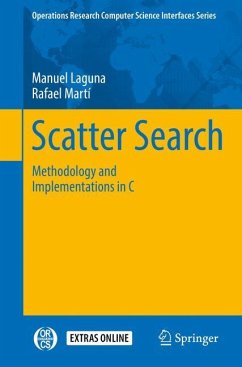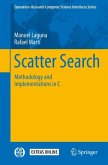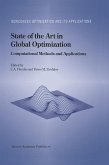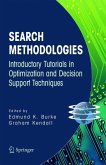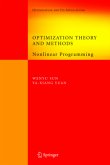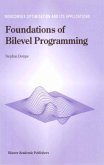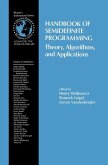The book Scatter Search by Manuel Laguna and Rafael Martí represents a long-awaited "missing link" in the literature of evolutionary methods. Scatter Search (SS)-together with its generalized form called Path Relinking-constitutes the only evolutionary approach that embraces a collection of principles from Tabu Search (TS), an approach popularly regarded to be divorced from evolutionary procedures. The TS perspective, which is responsible for introducing adaptive memory strategies into the metaheuristic literature (at purposeful level beyond simple inheritance mechanisms), may at first seem to be at odds with population-based approaches. Yet this perspective equips SS with a remarkably effective foundation for solving a wide range of practical problems. The successes documented by Scatter Search come not so much from the adoption of adaptive memory in the range of ways proposed in Tabu Search (except where, as often happens, SS is advantageously coupled with TS), but fromthe use of strategic ideas initially proposed for exploiting adaptive memory, which blend harmoniously with the structure of Scatter Search. From a historical perspective, the dedicated use of heuristic strategies both to guide the process of combining solutions and to enhance the quality of offspring has been heralded as a key innovation in evolutionary methods, giving rise to what are sometimes called "hybrid" (or "memetic") evolutionary procedures. The underlying processes have been introduced into the mainstream of evolutionary methods (such as genetic algorithms, for example) by a series of gradual steps beginning in the late 1980s.
Hinweis: Dieser Artikel kann nur an eine deutsche Lieferadresse ausgeliefert werden.
Hinweis: Dieser Artikel kann nur an eine deutsche Lieferadresse ausgeliefert werden.
From the reviews: "The book Scatter Search by Manuel Laguna and Rafael Marti ... provides an excellent introduction to this advanced optimization methodology. ... Different from most other books in this field, this book comes along with a rich variety of illustrative examples for various optimization problems ... . This significantly helps to gain an in-depth understanding of the methodology and enables readers to develop state-of-the-art implementations on their own. ... With this book, the authors have created an excellent reference both for researchers and practitioners." (Stephan Scheuerer, OR-News, Issue 23, March, 2005)

